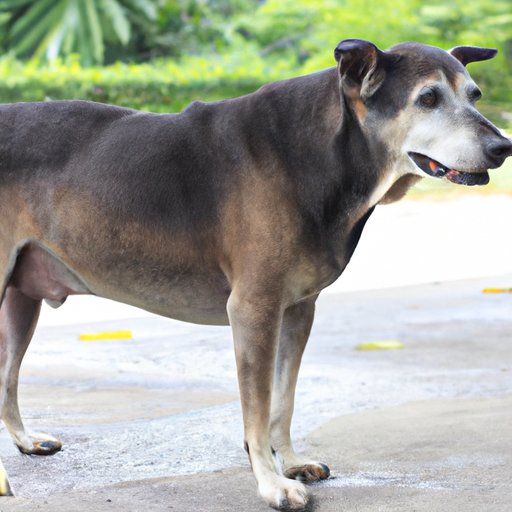Introduction
Spaying or neutering a dog is an important part of responsible pet ownership. It can help reduce the number of unwanted litters, prevent certain types of cancer, and improve a canine’s behavior. But how old can a dog be to get fixed? In this article, we’ll explore the pros and cons of spaying and neutering an aging canine, as well as the risks and considerations associated with the procedure.

Veterinary Advice on When it is Appropriate to Fix an Older Dog
When it comes to spaying and neutering a dog, there is no one-size-fits-all answer. The ideal age for a pup to be fixed depends on a variety of factors, including their age, breed, and overall health. Generally speaking, most veterinarians recommend spaying or neutering a puppy between the ages of 6-9 months.
That said, some pet owners opt to wait until their pet is older before having them fixed. For dogs over the age of 9 months, it is important to consult with a veterinarian to determine whether the procedure is appropriate. Factors such as age, health, and breed should all be taken into consideration before making a decision.

A Look at the Pros and Cons of Spaying and Neutering an Aging Canine
There are a number of advantages to spaying or neutering an aging canine. First and foremost, it helps prevent unwanted litters, which can help reduce the number of homeless animals in shelters. It can also reduce the risk of certain types of cancer, such as mammary cancer in female dogs, and testicular cancer in male dogs. Additionally, it may improve a canine’s behavior by reducing certain aggressive behaviors that are often caused by hormones.
However, there are also some drawbacks to spaying and neutering an older dog. One of the biggest risks is the risk of anesthesia-related complications. Because older dogs are more likely to have underlying medical conditions, they may be more susceptible to the effects of anesthesia. Additionally, there is a risk of infection and post-operative complications, both of which can be more serious in older dogs.

Examining the Risks Associated with Neutering or Spaying a Dog Later in Life
The risks associated with spaying and neutering an older dog include the risk of anesthesia-related complications, such as breathing difficulties or heart failure. Additionally, there is a risk of infection, which can be more serious in older dogs due to weakened immune systems. Finally, there is a risk of post-operative complications, such as excessive bleeding, pain, and inflammation.
Considerations for Pet Owners Deciding Whether to Fix Their Older Dog
When deciding whether to spay or neuter a senior dog, pet owners should take into consideration the potential health benefits, as well as the financial considerations. Although the procedure may be more expensive than spaying or neutering a younger dog, the long-term savings in terms of reduced vet bills may outweigh the initial cost.
The Advantages and Disadvantages of Waiting Until Later in Life to Spay or Neuter a Dog
Waiting until later in life to spay or neuter a dog can have its advantages and disadvantages. On the plus side, a mature dog is less likely to experience surgical complications and may have a greater tolerance for anesthesia. Additionally, waiting until later in life can reduce the risk of mammary cancer in female dogs and prostate issues in male dogs.
On the downside, waiting until later in life to spay or neuter a dog can increase the risk of unwanted litters and make it more difficult to find a home for the puppies if they do become pregnant. Additionally, waiting too long can increase the risk of prostate issues in male dogs and mammary cancer in female dogs.
An Overview of the Health Benefits and Potential Complications of Spaying or Neutering a Senior Dog
Spaying or neutering an older dog has a number of potential health benefits. It can reduce the risk of mammary cancer in female dogs and testicular cancer in male dogs. It can also reduce the risk of uterine infections, as well as prostate issues in male dogs. However, there are also some potential risks associated with the procedure, including anesthesia-related risks, post-operative risks, and infection risks.
Conclusion
Deciding when to spay or neuter a dog is an important decision that should not be taken lightly. While there are a number of potential benefits to fixing an older dog, there are also risks associated with the procedure. Pet owners should consult with their veterinarian to discuss the age, health, and financial considerations before making a decision.
(Note: Is this article not meeting your expectations? Do you have knowledge or insights to share? Unlock new opportunities and expand your reach by joining our authors team. Click Registration to join us and share your expertise with our readers.)
